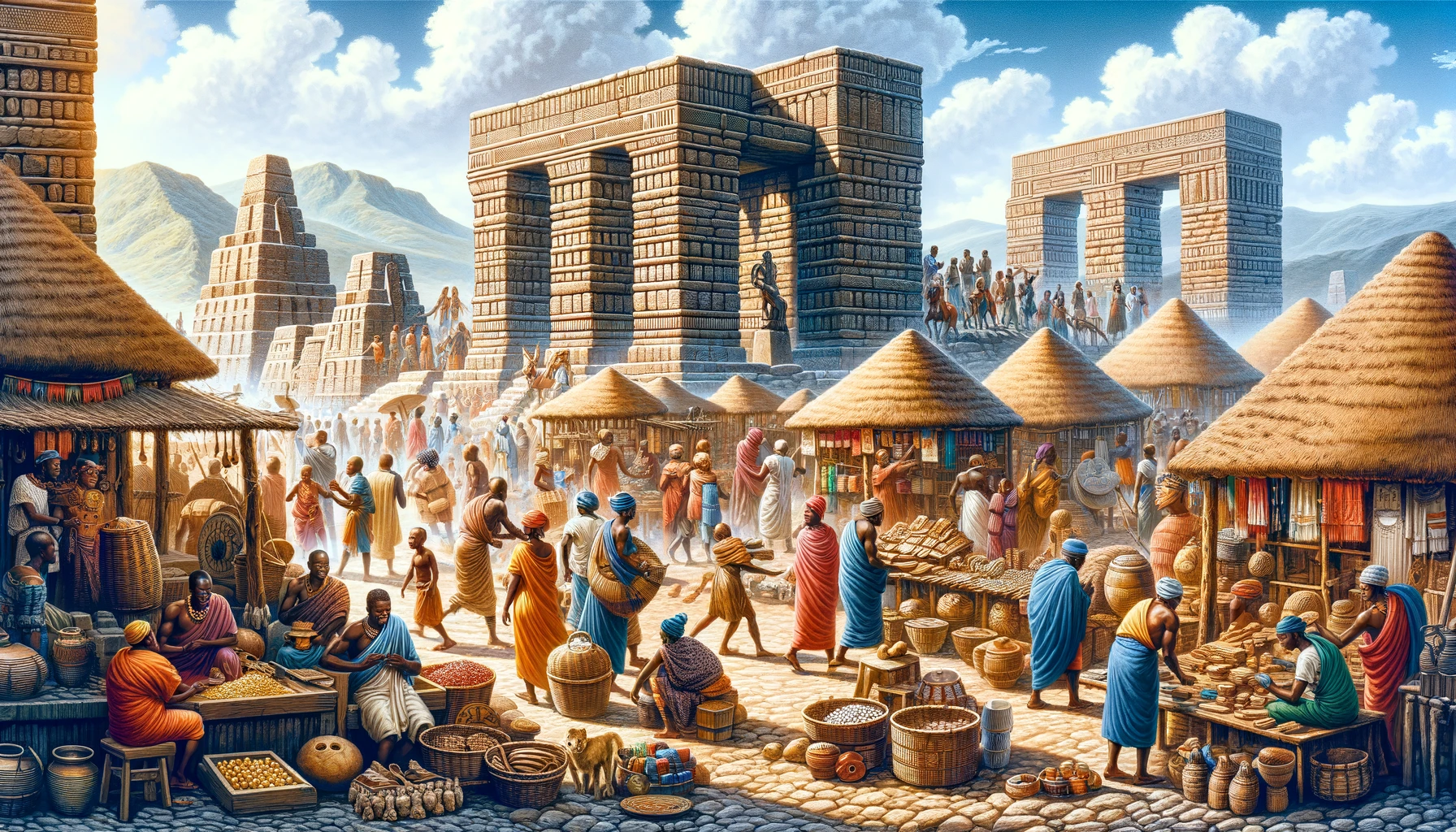Grade 6 History Notes, Exam Papers, and Memos PDF – Term 1
Welcome, Grade 6 learners and educators! As you embark on an exciting journey through history, we’re thrilled to present a comprehensive collection of study materials for Term 1, focusing on “An African Kingdom Long Ago in Southern Africa: Mapungubwe.” This rich period, spanning from Week 1 to Week 11 of Term 1, offers a fascinating glimpse into a significant era of African history.
Grade 6 History Term 1 Topics for 2024
- Changes in Societies in the Limpopo Valley (900 AD – 1300 AD): Explore how societies grew larger, more organized, and complex. Understand the dynamics that transformed these communities over four centuries.
- Pre-Mapungubwe Settlements – K2 and Schroda: Dive into the early settlements before Mapungubwe’s emergence. Learn about their unique characteristics and their roles in the region’s development.
- The Concept of Sacred Leadership and Kingship: Discover the role of the king in Mapungubwe and the spiritual significance attached to leadership.
- Mapungubwe’s First Stone-Walled Palace: Uncover the story behind the first stone-walled palace. Understand its architectural significance and role in the kingdom’s history.
- Mapungubwe Hill – Significance and Mystery: Delve into the mysteries and importance of Mapungubwe Hill, a site of great historical and cultural value.
- Emergence of the First Town and Social Classes: Learn how Mapungubwe developed into a bustling town with distinct social hierarchies.
- Symbols of Royal Power – Golden Rhinoceroses and Other Objects: Investigate how golden artifacts symbolized royal power and political leadership in Mapungubwe.
- Trade Networks – Local and Global: Explore the extensive trade routes across Africa and the Indian Ocean, revealing Mapungubwe’s global connections.
- People’s Journeys: Routes, Dangers, and Navigation: Experience the challenges and adventures of ancient traders as they navigated vast distances on foot.
- East Coast Trade: Changes and Continuity: Analyze how trade along the East Coast evolved and its impact on inland settlements.
Downloadable Resources:
To enhance your learning experience, we offer a range of downloadable resources. These include detailed notes on each topic, carefully crafted exam papers to test your understanding, and memos that provide insight into the correct answers. All materials are designed to align with your curriculum and help you grasp the essence of Grade 6 History for Term 1.
Embrace this opportunity to immerse yourself in the rich history of Mapungubwe and the Limpopo Valley. These resources are just a click away, ready to assist you in your educational journey. Happy learning!
Grade 6 History Questions and Answers for Term 1
Choose the correct answer:
1.1. A place where people lived and objects from the past are dug up.
A. Floodplain
B. Village
C. Archaeological site
D. Oker
Correct Answer: C. Archaeological site
Elaboration: An archaeological site is a location where evidence of past human activity is preserved and has been, or can be, investigated using the discipline of archaeology. It’s where people lived in the past, and objects from those periods can be excavated and studied.
1.2. The revival of art and ancient knowledge in Europe.
A. History
B. Discoverers
C. Turning point
D. Renaissance
Correct Answer: D. Renaissance
Elaboration: The Renaissance was a period in Europe, from the 14th to the 17th century, considered the bridge between the Middle Ages and modern history. It was a time marked by a revival in art, science, and ancient knowledge.
1.3. In Africa, beads were used to make jewelry. Beads and shells were used by traders as ______ for goods.
A. Ornament
B. Jewelry
C. Payment
D. Gifts
Correct Answer: C. Payment
Elaboration: In many African societies, beads and shells were not just decorative items but also served as a form of currency. Traders used them as a medium of exchange, effectively making them a form of payment for goods.
1.4. People were placed in classes from important to less important.
A. Political structure
B. Social structure
C. Religious structure
D. Traders
Correct Answer: B. Social structure
Elaboration: Social structure refers to the way a society is organized into predictable relationships and patterns of social interaction. This often includes the classification of people into different levels of importance or classes, from the most important to the least.
1.5. The ornamental baton of a ruler (king).
A. Gold leaf
B. Scepter
C. Maritime
D. Ochre
Correct Answer: B. Scepter
Elaboration: A scepter is an ornamental staff or wand held in the hand by a ruling monarch as a symbol of power and authority. It’s a common emblem of kingship and is often used in ceremonies.
1.6. The name “Zimbabwe” originated from the Shona words dzimba dza mabwe and it means ______.
A. Stone kingdom
B. Stone walls
C. Stone houses
D. Stone buildings
Correct Answer: D. Stone buildings
Elaboration: Zimbabwe’s name is derived from the Shona term “dzimba dza mabwe,” which translates to “stone buildings.” This is in reference to the stone structures found at Great Zimbabwe, an ancient city in the country’s southeastern hills.
Long Answers
1.1. Reason for Farmers Staying at K2 and Schroda:
Farmers chose to stay at K2 and Schroda due to the fertile land and access to water, which were crucial for agriculture. These sites were also strategically located for trade, as they were near trade routes.
1.2. What They Exported:
Ivory, gold, and animal skins.
1.3. What They Imported:
Glass beads, ceramics, and cloth.
1.4. Reason for Moving Away from Schroda and K2:
They likely moved due to depletion of local resources, or for better trade opportunities and strategic reasons, such as seeking more defensible locations like Mapungubwe Hill.
1.5. Where They Moved To:
Mapungubwe Hill.
1.6. Travel to Coastal Towns:
The farmers likely traveled on foot, following established trade routes, which could include paths along rivers or through valleys.
1.7. Preventing Getting Lost:
They probably used natural landmarks, stars for navigation, and knowledge passed down from previous travelers to find their way and avoid getting lost.
1.8. Reason for Hiding Gold:
Gold was hidden likely for safety and security reasons, to protect their wealth from theft or invasion.
1.9. Symbol of Wealth and Power of Kings:
Golden artifacts like the golden rhinoceros, and other lavish items made of gold and ivory.
1.10. Social Classes of Mapungubwe:
Mapungubwe society was hierarchically structured with a king or leader at the top, followed by a class of elites (priests, military leaders), skilled craftsmen, farmers, and laborers at the bottom.
1.11. Languages Mixed in Swahili:
Arabic and Bantu.
1.12. Leader Who Received the Order of Mapungubwe:
Nelson Mandela.
1.13. Value of Gold in Mapungubwe Era:
Gold was a symbol of wealth, power, and divine connection. It played a crucial role in trade and was used in religious and royal artifacts, enhancing the status of the kingdom both locally and in wider trade networks.
1.14. Birthplace of Marco Polo:
Venice, Italy.
1.15. Why Marco Polo’s Family Didn’t Recognize Him:
Marco Polo was away for so long (24 years) and had changed so much in appearance and manner that his family didn’t initially recognize him upon his return.
1.16. Who Marco Polo Worked for in China:
Kublai Khan.




